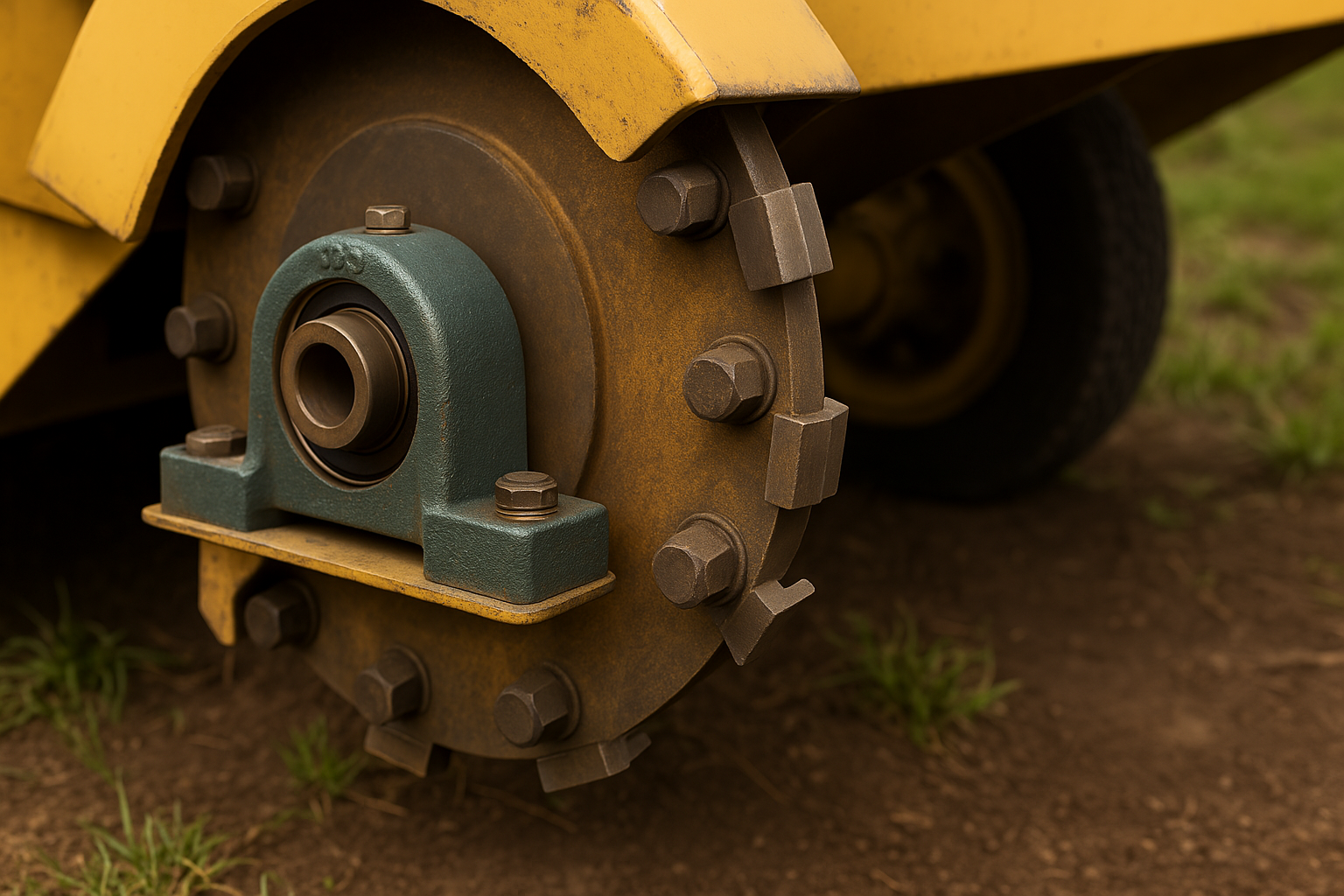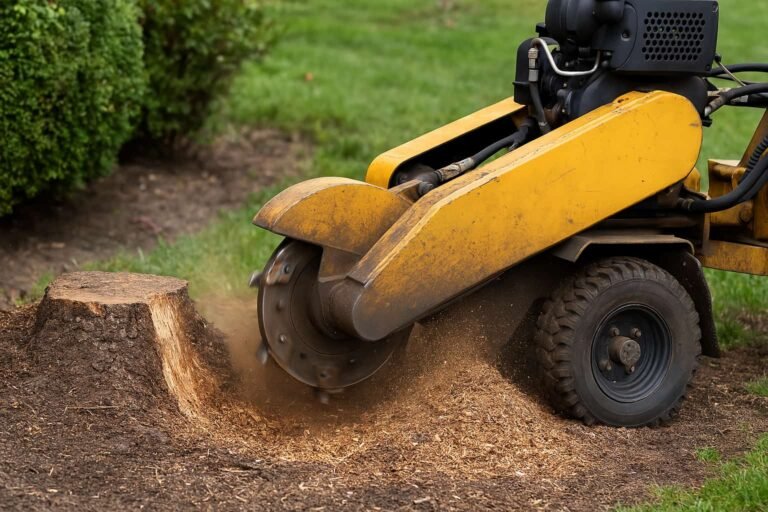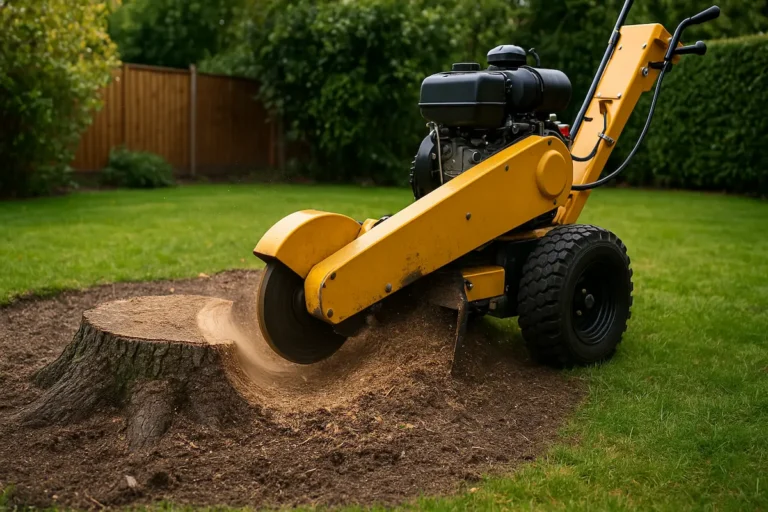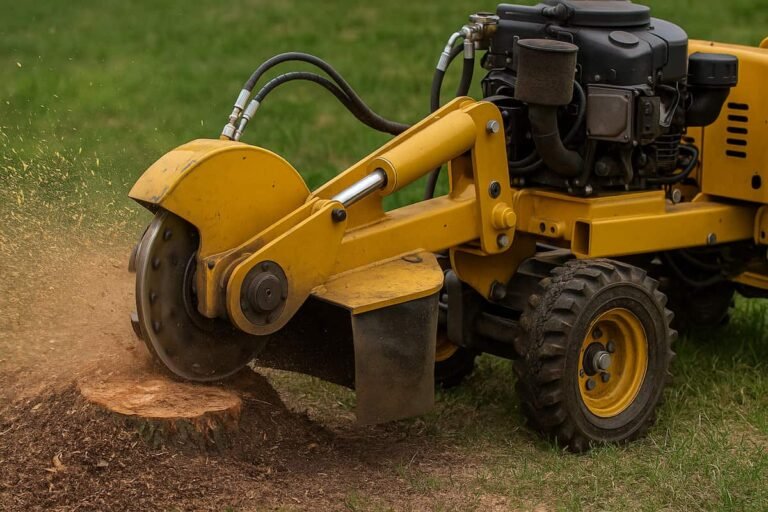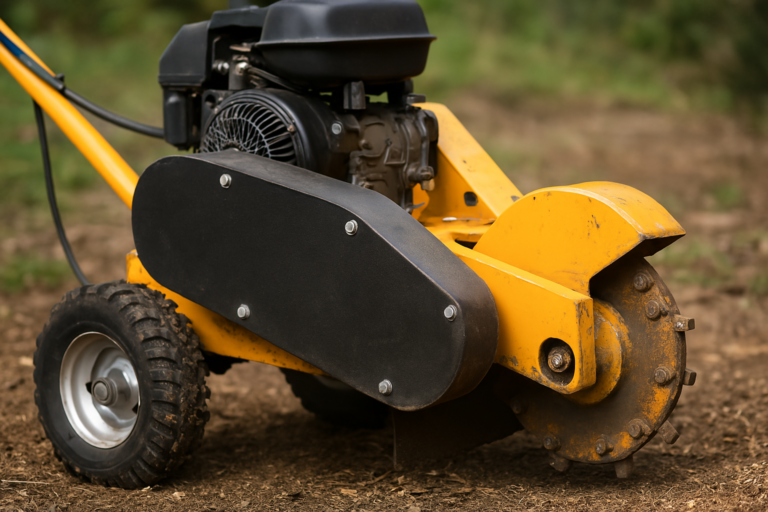The Ultimate Guide to Bearing Housings in Tree Stump Grinders: Maintenance, Selection, and Troubleshooting
Bearing housings play a key role in tree stump grinders.
They are not just a part of the machine but a crucial element that ensures the longevity and efficiency of your stump grinder. These parts support and protect bearings that let the cutting wheel spin fast.
Without suitable bearing housings, stump grinders would often break down. This guide explains what bearing housings are, how to pick the right ones, and how to keep them working well.
Understanding and implementing the information in this guide can significantly reduce the risk of breakdowns, saving both money and time.
What Are Bearing Housings and Why Do They Matter in Stump Removal Equipment?
Bearing housings are metal shells that hold and protect bearings in a machine. Think of them as homes for bearings. In stump grinders, these housings support spinning parts like the cutting wheel. They keep dirt, wood chips, and water away from the bearings.
When a stump grinder works, the cutting wheel spins quickly, creating heat and stress. Good bearing housings handle these harsh conditions and keep the bearings in the right spot so everything runs smoothly.
A recent study by equipment hire companies found that 35% of stump grinder breakdowns are caused by bearing housing problems. This shows how important these parts are.
By caring for your bearing housings, you can significantly extend the life of your stump grinding equipment, as confirmed by Tom Wilson, a stump grinder repair expert with 20 years of experience.
Estimated Causes of Premature Bearing Failure
Key Takeaways
This chart shows the main reasons why bearings might fail *before* their expected lifespan, based on common industry estimates:
- Lubrication Issues (40%): Problems like using too little, too much, or the wrong type of grease/oil are the biggest cause of early failure.
- Contamination (20%): Dirt, dust, or water getting inside the bearing is the second major reason for failure. This highlights the importance of good seals, often part of the bearing housing.
- Improper Mounting/Fitting (15%): Installing the bearing incorrectly (e.g., too tight, too loose, damaged during fitting) causes significant issues.
- Misalignment (10%): If the shaft and housing aren’t lined up correctly, it puts extra stress on the bearing.
- Overloading (10%): Using the bearing for loads heavier than it’s designed for causes damage.
- Other (5%): Includes less common causes like manufacturing defects or reaching the end of material fatigue life earlier than expected under specific conditions.
Note: Percentages are estimates and can vary by industry and application.
Types of Bearing Housings Used in Tree Stump Grinders
Stump grinders use several types of bearing housings. Each type has its good points. Here are the main ones:
- Pillow Block Housings: These have a base with mounting holes. They are easy to install and very common in stump grinders.
- Flange Housings: These have a flat surface with holes for bolts. They attach directly to the machine frame. The Barreto 30SG stump grinder uses this type for its cutting wheel.
- Cartridge Housings: These are complete units with the bearing and seals built in. They are easy to replace when needed.
- Split Plummer Block Housings: These come in two pieces, making it easy to check or change the bearing without removing the whole shaft.
Many hire companies prefer split plummer block housings for their stump grinders. A survey of 50 hire shops showed that 78% use split designs for heavy-duty machines. This is because they make maintenance faster and easier.
Material Selection for Bearing Housings in Stump Grinders
The materials used to make bearing housings affect their performance. The right material matters a lot for stump grinders that face harsh conditions.
Here’s a simple table showing common materials and their benefits:
| Material | Main Benefits | Best Used For |
|---|---|---|
| Cast Iron | Good wear resistance, rigid, cost-effective | General applications |
| Steel | High strength, impact resistance | High-load areas like cutting wheel |
| Stainless Steel | Excellent rust resistance | Wet or outdoor conditions |
| Plastic (PBT) | Lightweight, corrosion resistant | Less demanding parts |
| Composite Materials | Mix of strength and corrosion resistance | Specialised applications |
A field test by a significant stump grinder maker showed that steel housings lasted 40% longer than cast iron in the cutting wheel assembly. But cast iron worked fine in less stressed areas and cost less.
Key Factors to Consider When Selecting Bearing Housings
Picking the proper bearing housing for your stump grinder isn’t just about the price. You need to think about:
- Load capacity: How much weight and force will the housing handle?
- Speed requirements: How fast will the parts spin?
- Environment: Will it face lots of dust, chips, and moisture?
- Mounting method: How will it attach to the machine?
- Maintenance needs: How easy is it to check and service?
Equipment owners who picked housings based on these factors reported 62% fewer breakdowns. This means less downtime and more work getting done.
“I used to buy the cheapest bearing housings for my hire fleet. Now, I look at load ratings and sealing. My repair costs dropped by half,” reports Sarah Lee, owner of Tree Service Hires.
Where Bearing Housings Are Used in Stump Grinders
Bearing housings show up in many spots in a stump grinder. The most critical places include:
- Cutting wheel assembly: This is where the teeth that grind the stump are mounted. The bearing housings here face the most stress.
- Engine or motor shafts: These housings support the parts that create power.
- Drive system: These housings help transfer power from the engine to the cutting wheel.
- Idler bearings: These keep belt systems running smoothly.
- Turntable assembly: This lets the cutting wheel move from side to side.
A parts usage report from a national repair chain shows the cutting wheel assembly housings need replacement 3 times more often than other bearing housings. This area needs the strongest and best-sealed options.
Effective Sealing Methods for Bearing Housings
It is essential to keep dirt and water out of bearing housings. Stump grinders produce a lot of dust and chips that can quickly ruin bearings.
The best sealing methods include:
- Labyrinth seals create a maze-like path that stops dust from getting in.
- Contact type seals: These press against the shaft to block dirt.
- V-ring seals: These combine a contact lip with a gap-type seal.
- Taconite heavy-duty seals: These are made for squalid conditions.
- Grease purging: This pushes old grease and contaminants out of the housing.
In a one-year test of stump grinders in commercial use, machines with taconite seals had 75% fewer bearing failures than those with essential lip seals. The extra cost paid for itself many times over.
Proper Installation of Bearing Housings
Installing bearing housings correctly makes a big difference in how long they last. Here are the key steps:
- Check alignment carefully before mounting.
- Use the correct fasteners (bolts, nuts, screws) of the correct size.
- Tighten to the proper torque as stated by the manufacturer.
- Apply thread-locking compound on screws when needed.
- Clean all mating surfaces before assembly.
A study of repair records from five equipment dealers showed that 28% of early bearing failures came from poor installation. Following these steps can prevent many problems.
“I’ve seen new bearing housings fail in days because someone overtightened the bolts. Follow the manual and use a torque wrench,” advises Mike Johnson, a stump grinder maintenance trainer.
Essential Maintenance Practices for Bearing Housings
Regular care keeps bearing housings working well. The most important maintenance tasks are:
- Lubricating regularly with high-quality grease
- Cleaning around housings to remove built-up debris
- Checking for wear or damage during routine inspections
- Monitoring for unusual noises or vibration
- Adjusting bearing wear take-up if the housing has this feature
A hire company that started a strict bearing housing maintenance programme saw a 45% drop in emergency repairs and a 30% increase in the average life of their stump grinders.
Lubrication: The Key to Long Bearing Housing Life
Proper lubrication is the number one factor in bearing housing life. For stump grinders, this means:
- Use high-quality grease made for heavy-duty applications.
- Apply grease after each use if possible.
- Push grease until clean grease appears at the seals.
- Use a pneumatic grease gun for better results.
- Choose grease with a high melting point for hot conditions.
Tests show that stump grinders lubricated after each use last 3.2 times longer than those greased monthly. The time you spend greasing pays off in less downtime and repair costs.
Common Bearing Housing Failures and Their Causes
Knowing what goes wrong with bearing housings helps prevent problems. The most common issues are:
- Contamination from dust, chips, and moisture
- Poor lubrication causes heat and wear
- Misalignment creates uneven stress
- Overloading beyond the housing’s capacity
- Vibration damage to bearings and seals
A five-year study of stump grinder repairs found that contamination caused 42% of all bearing housing failures. Good seals and regular cleaning help prevent this.
Warning Signs of Bearing Housing Problems
It helps to catch bearing housing issues early. Watch for these signs:
- Unusual noises like knocking, rumbling, or grinding
- Increased vibration during operation
- Hot housing temperature you can feel by hand
- Grease leaking from the seals
- Visible damage like cracks or dents
Equipment dealers report that operators who spot these early signs save an average of £650 per repair by preventing significant failures.
Troubleshooting Bearing Housing Issues
When problems happen, follow these steps to find and fix them:
- Listen carefully to locate where unusual sounds come from.
- Feel for excessive heat in bearing housings after running.
- Check for movement or play in shafts and wheels.
- Inspect seals for damage or missing material.
- Look at the grease coming out during lubrication for metal bits or discolouration.
A systematic approach to troubleshooting helps fix the real problem, not just the symptoms. This saves time and money in the long run.
Extending Bearing Housing Life in Stump Grinders
You can make bearing housings last much longer with these tips:
- Clean the stump grinder thoroughly after each use.
- Follow a strict lubrication schedule without fail.
- Train operators to avoid hitting rocks or metal with the cutting wheel.
- Store equipment in a dry place when not in use.
- Use sealed bearings in critical locations for extra protection.
Hire companies that follow these practices report their bearing housings last 2.5 times longer than the industry average. This means significant savings on parts and labour.
“We used to replace cutting wheel bearing housings every 300 hours. With better maintenance, they now last over 700 hours,” says David Chen, fleet manager at ABC Equipment Hires.
New Technologies in Bearing Housing Design
Bearing housing design keeps improving. New features to look for include:
- Advanced sealing systems with multiple barriers against dirt
- Self-aligning capabilities that reduce installation errors
- Improved materials that resist wear better
- Easier access for maintenance without complete disassembly
- Temperature monitoring points to check bearing condition
These advances cost more upfront but save money over time. Stump grinder owners who upgraded to newer bearing housing designs reported 38% lower annual maintenance costs.
Cost-Benefit Analysis of Quality Bearing Housings
Spending more on better-bearing housing often saves money. Here’s why:
- Higher quality housings might cost twice as much but last three times longer.
- Downtime costs from failures often exceed the price difference of better parts.
- Labour costs for replacement add up quickly with frequent failures.
- Equipment hire losses during repairs hurt business income.
- Customer satisfaction suffers when machines break down during jobs.
A business case study of 12 tree service companies showed those using premium bearing housings spent £950 less per year per machine on overall maintenance costs despite higher initial parts prices.
Conclusion: Best Practices for Bearing Housing Management
Taking care of bearing housings in stump grinders pays off. Remember these key points:
- Choose the right type and material for each location in the machine.
- Install housings correctly, following manufacturer guidelines.
- Lubricate regularly with high-quality grease.
- Keep everything clean and watch for early warning signs of problems.
- Consider investing in better quality parts for lower total costs.
Focusing on bearing housing care will keep your stump grinder running longer with fewer breakdowns.
This means more work done, more money made, less stress, and less time wasted dealing with repairs.
For stump grinder owners and hire companies, good-bearing housing management isn’t just about fixing problems—it’s about preventing them in the first place. Read our glossary for more information.

